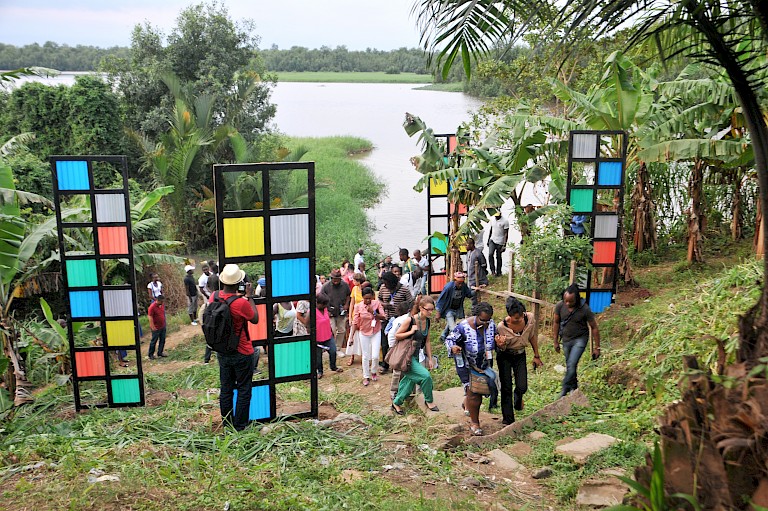



Face à l'eau was Salifa Lindou’s contribution to SUD 2010, consisting of five vertical panels made of wood, metal, and corrugated plastic sheets, punctuated with open square windows. Set at 3.7-meters tall, these physically disparate screens created the illusion of a single screen when viewed from a distance, and up close, provided audiences with a screened view overlooking the river.
Ties Ten Bosch created his own artist residency for seven weeks (October to December) in Ndogpassi III, a block in the poorer part of the city without running water. The artist’s objective was to use the daily life on site as material. His intervention belongs to a growing tide of relational art based on social interaction and analysis. Like many such art pieces, this one is indistinguishable from what we would normally consider social work or social action. The residents are left with a new bridge enabling better access to sites for water collection.
Pascale Marthine Tayou constructed a totem of pots historically used by housewives for food and drink, installing it in a busy intersection of the city. Tayou’s sculpture, despite the sense of absurdity it acquired towering over the everyday flows of traffic and pedestrians, might be considered a homage to the labor of cooking and water collection, traditionally the domain of women and girls.
Concerning the curatorial theme, Simon Njami wrote: “Water is not an eternal gift. It is daily battle that should concern each of us. It is the future of our world.” Each of the participating artists, in their own way, elaborated on this consciousness of water as a site of sustenance and struggle. In staging this consciousness in public sites, SUD 2010 contributed to the circulation of water as a topic in public discussions, such discussions being a crucial platform for everyday political claims-making and contention regarding the public or private control and distribution of water.
All copyright belongs to Shanghai Academy of Fine Arts, Shanghai University.



